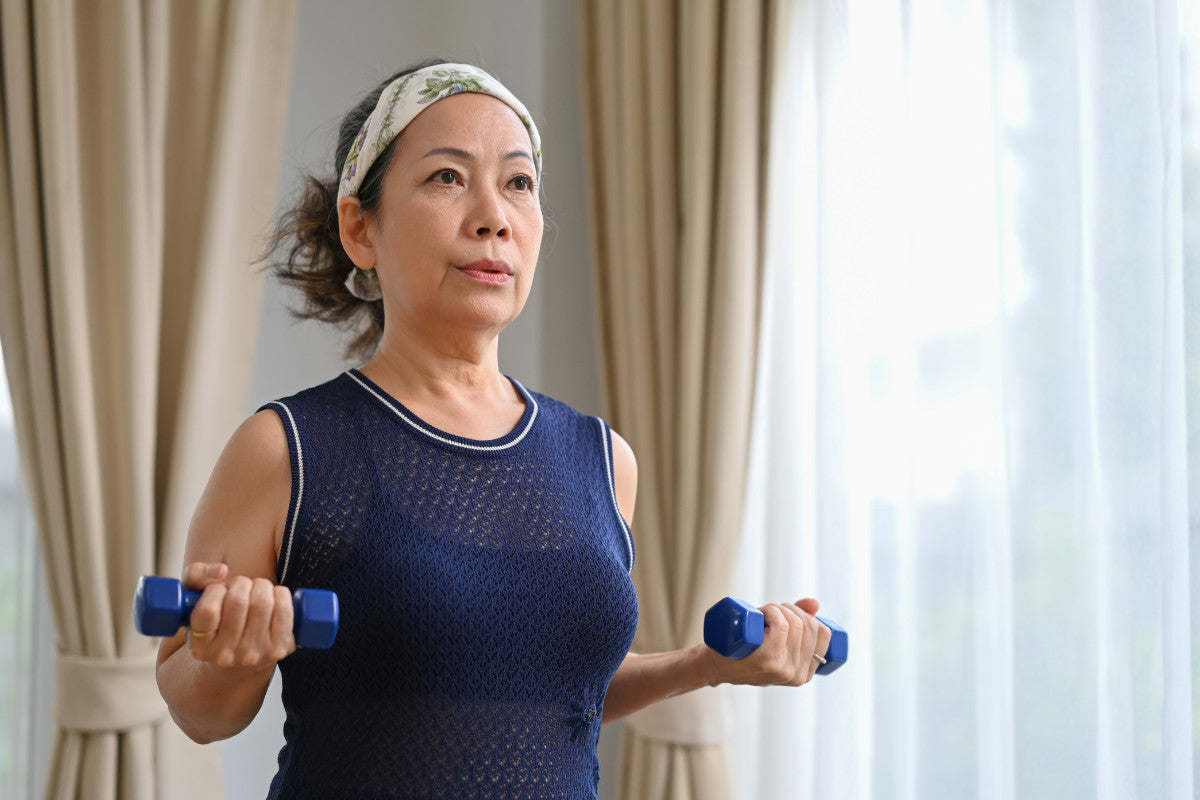Your Cart is Empty
FREE SHIPPING OVER $45 & RETURNLESS REFUNDS

When it’s hot enough to fry an egg on the sidewalk, even thinking about exercise makes my joints ache. But we can’t afford to sit still for too long—especially with sciatica, neuropathy, or stiff, inflamed joints in the mix.
The trick isn’t to push harder. It’s to move smarter—so you can keep your body in motion without setting off a flare.
Here’s what works for me when the weather won’t cooperate:
Forget the blazing sidewalks. When the temps are climbing, take your walk inside. I’ve done laps at:
Grocery stores
Big box stores (hello, home improvement aisle)
Indoor malls
Community rec centers
It’s cooler, safer, and easier on your joints. Plus, if you need a cart to lean on, you’ve got one right there.
You don’t need to swim laps like an Olympian. Even gentle movement in the water counts:
Walk back and forth in waist-deep water
Do light kicks or stretches while holding the pool wall
Float, stretch, move your arms—it all helps
Looking for something a little more fun than swimming laps? Try:
Water aerobics (check your local senior center or YMCA)
Paddleboarding on calm water (great for balance and core, if you’re steady on your feet)
Kayaking (you’ll get arm movement and core strength with little joint strain)
Pool noodle exercises or resistance bands in water
These activities are easy on the joints but still give you a workout—and they beat sitting inside staring at the thermostat.
If the daytime heat shuts you down, switch it up. I like to head out after dinner when the sun’s low and there’s a breeze.
To make it more fun:
Walk with a friend or neighbor
Listen to a good podcast or audiobook
Use a walking stick or headlamp if it’s dark
Bonus: Walking after dinner can help with digestion and blood sugar too.
Once you’ve gotten your body moving, even just a little, don’t forget the cooldown. Especially when it’s hot out, recovery is just as important as the activity itself.
Here’s what I do after a workout—or even just a round of chores:
Drink cold water slowly (add lemon or mint if you want something extra)
Use a misting fan or sit in front of a fan with a cool washcloth
Drape a frozen towel around your neck or across your shoulders
Dunk your feet in a bucket of cold water—feels amazing and helps with inflammation
Take 5–10 minutes to stretch gently while cooling off
Why it matters: Cooling down helps regulate your body temp, calm your nervous system, and prevent your pain from spiking later.
You don’t need to “work out.” You just need to keep moving.
Because when you stop, your symptoms don’t.
And if your muscles are still cranky after all that? You know what I reach for.
👉 Outback Oil is always stocked in my cabinet.
Stay cool out there,
–Mark
**Always consult your healthcare provider before starting any new exercise routine, especially if you have sciatica, neuropathy, arthritis, or other chronic conditions. Adjust activities as needed to avoid pain or injury.